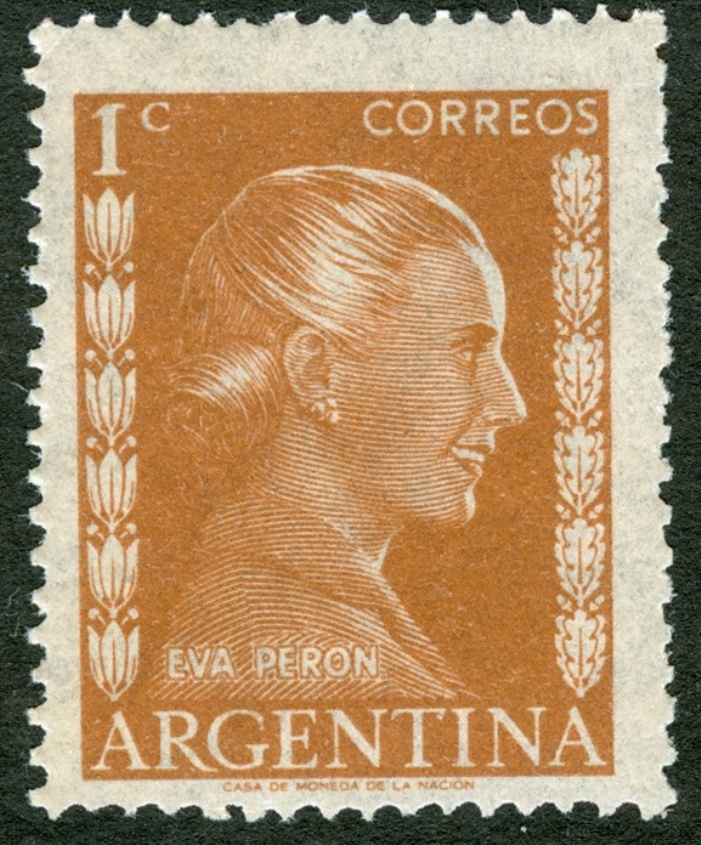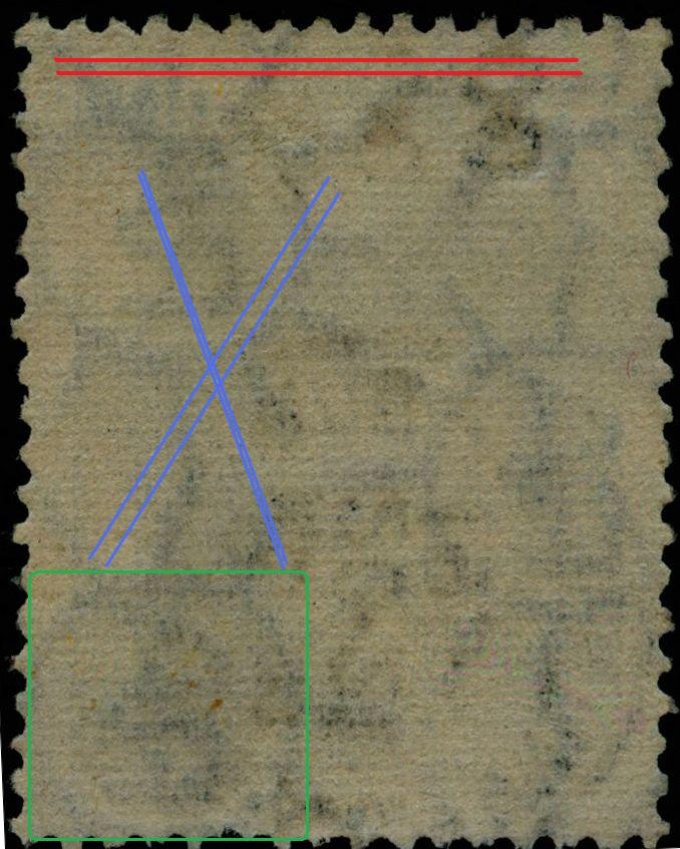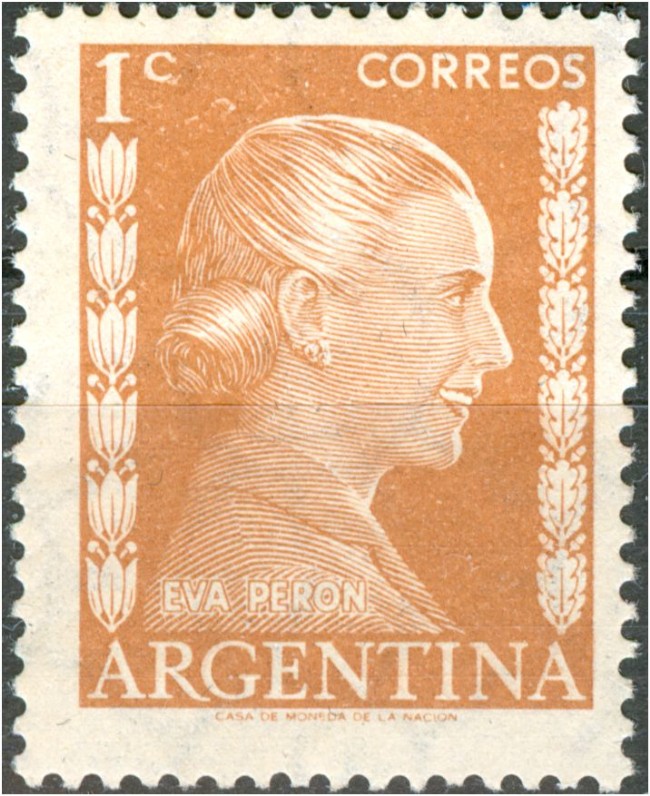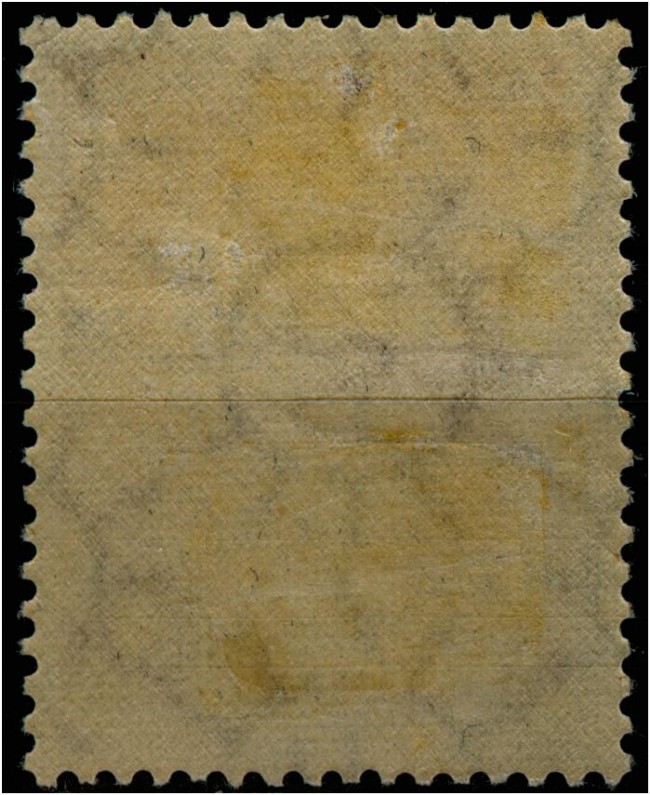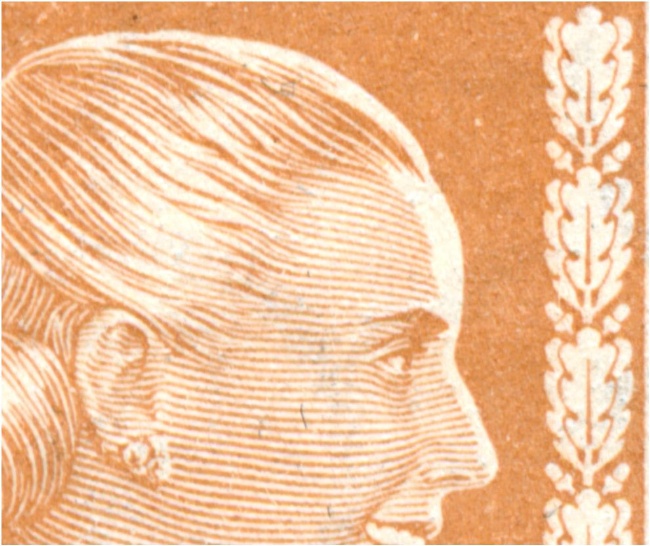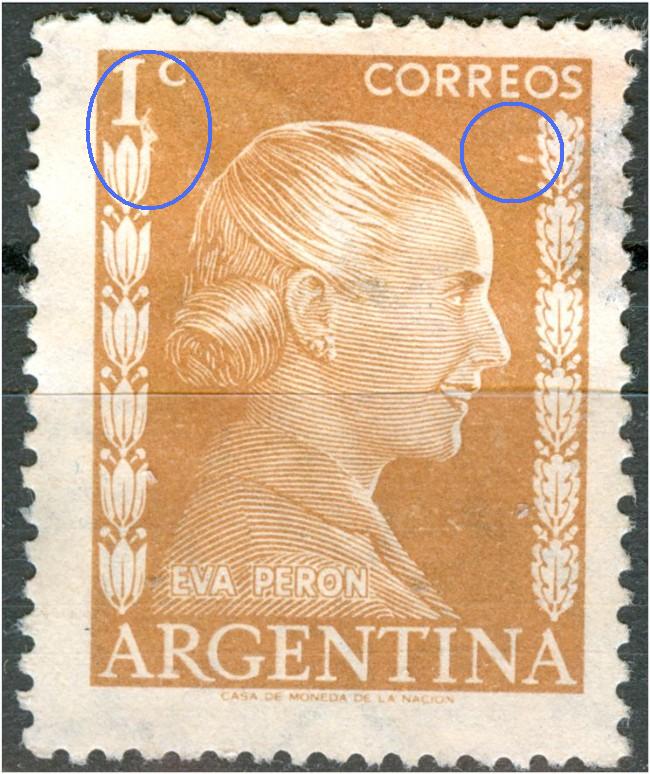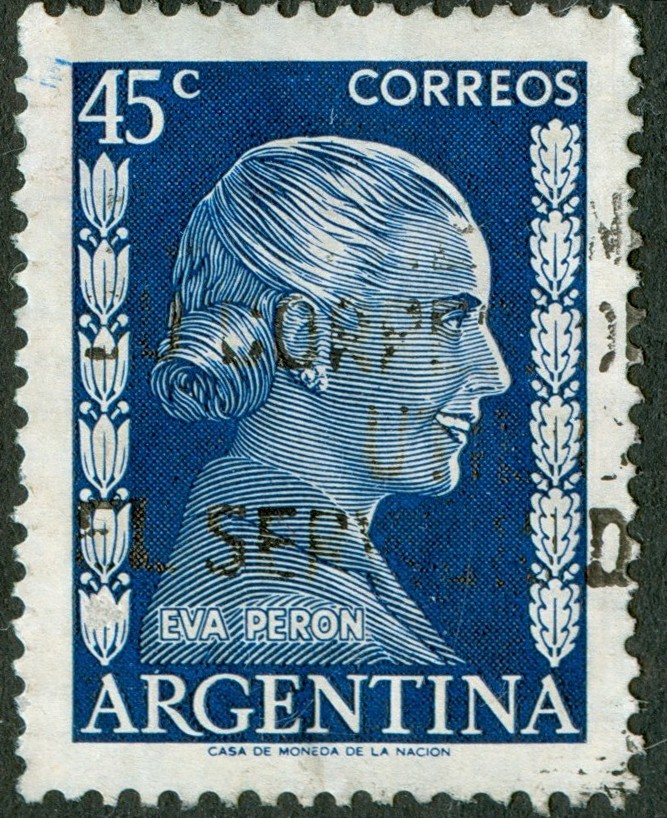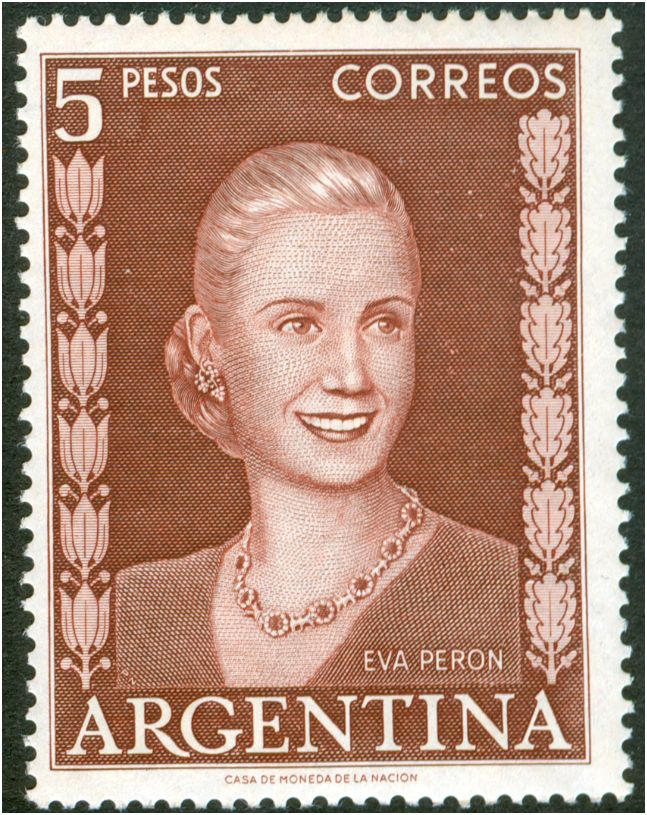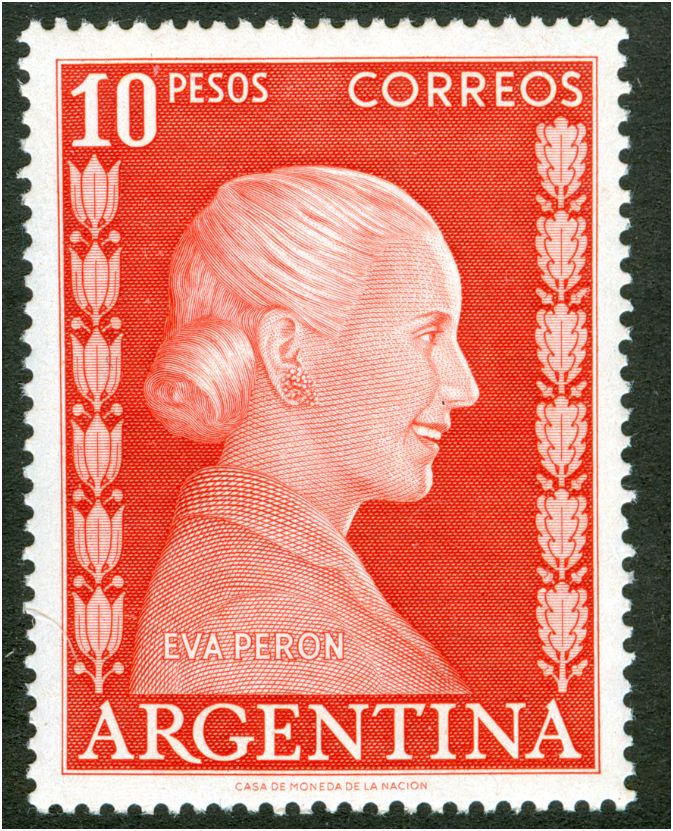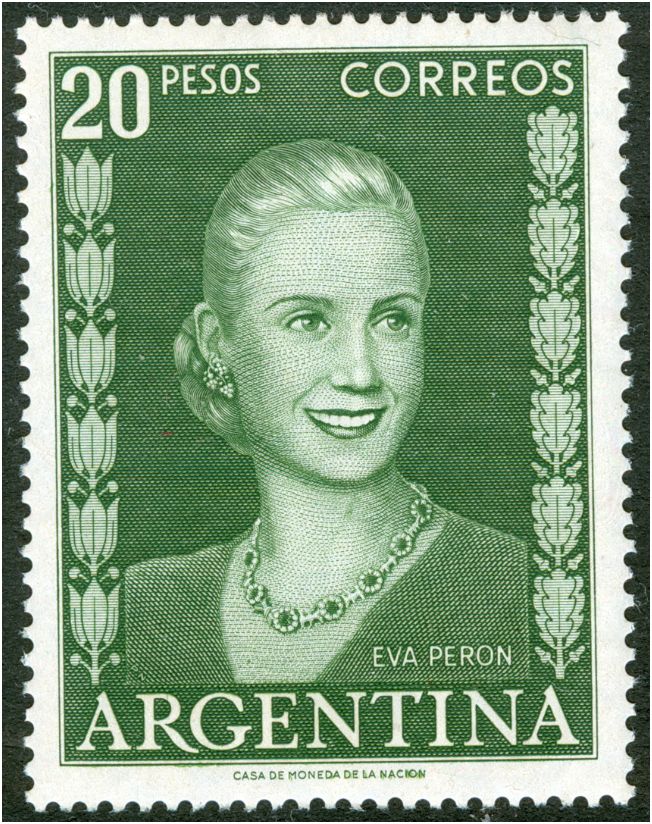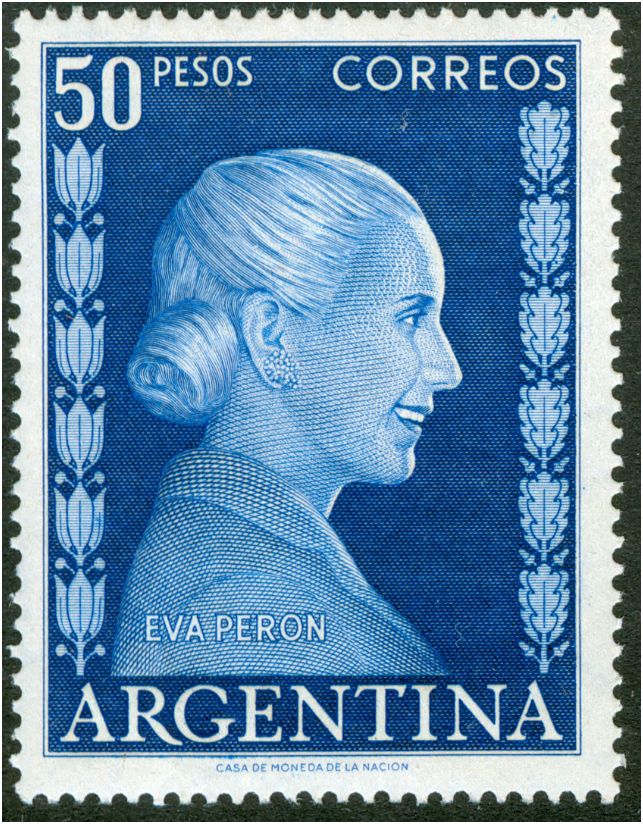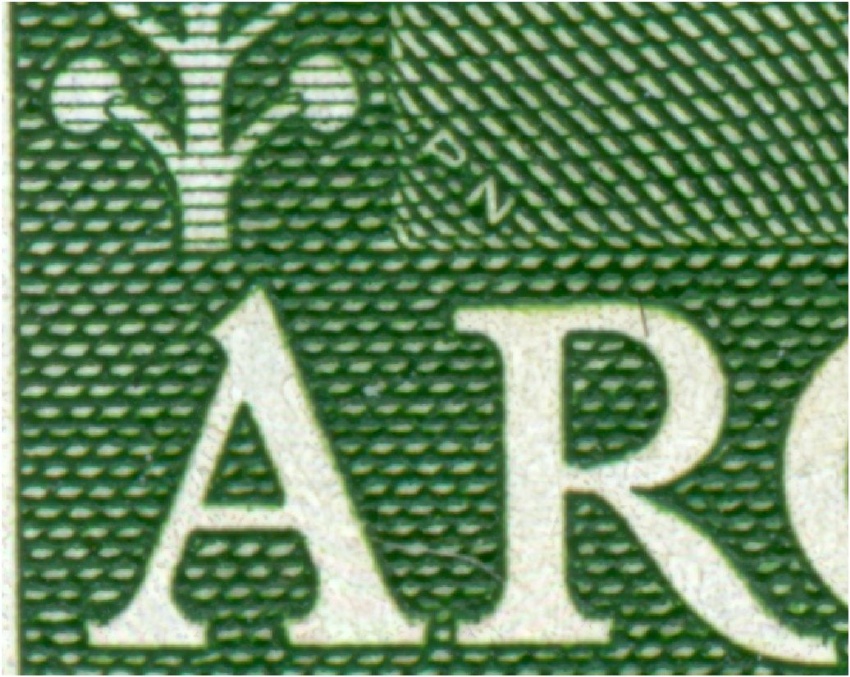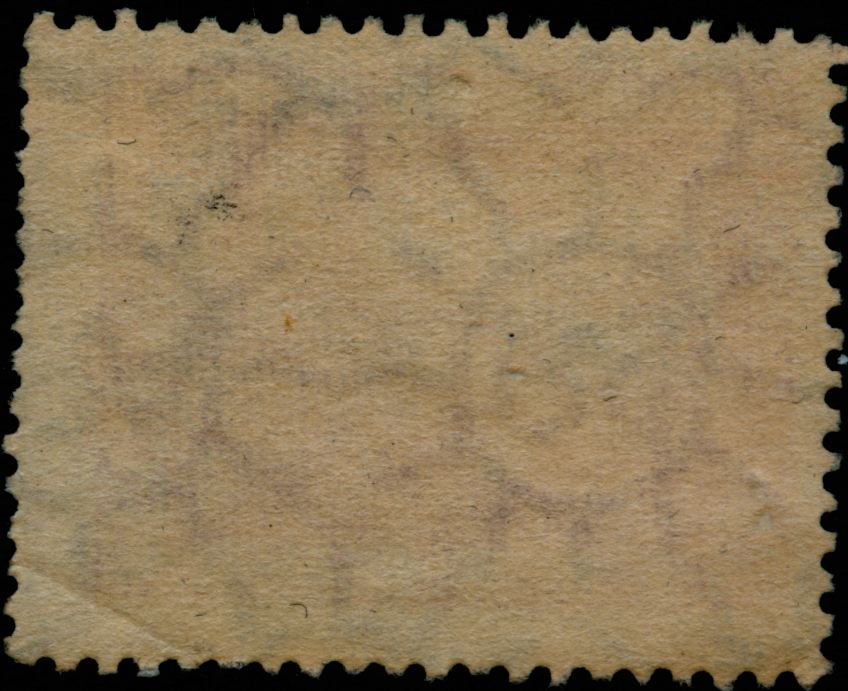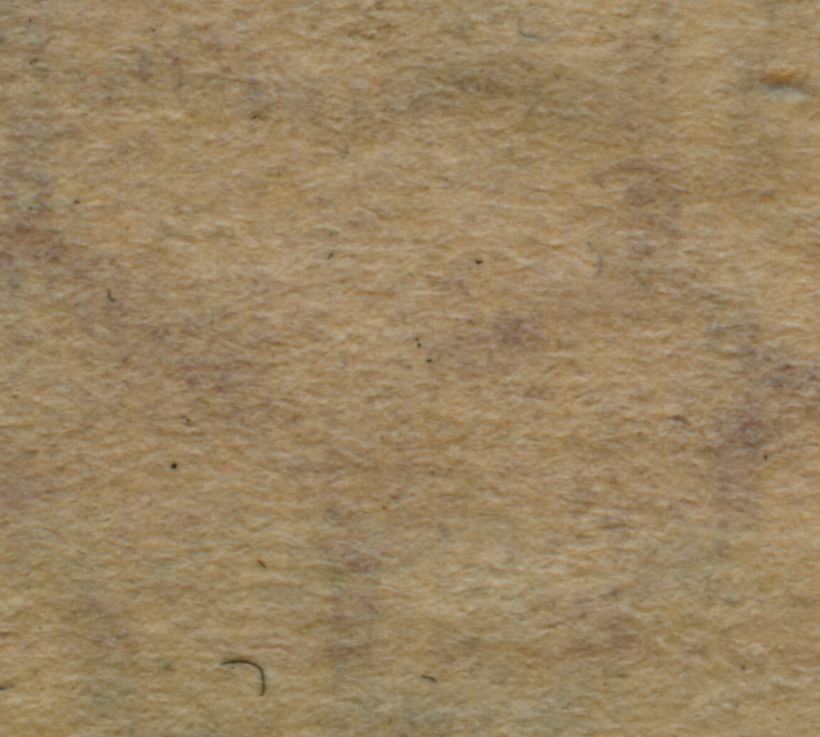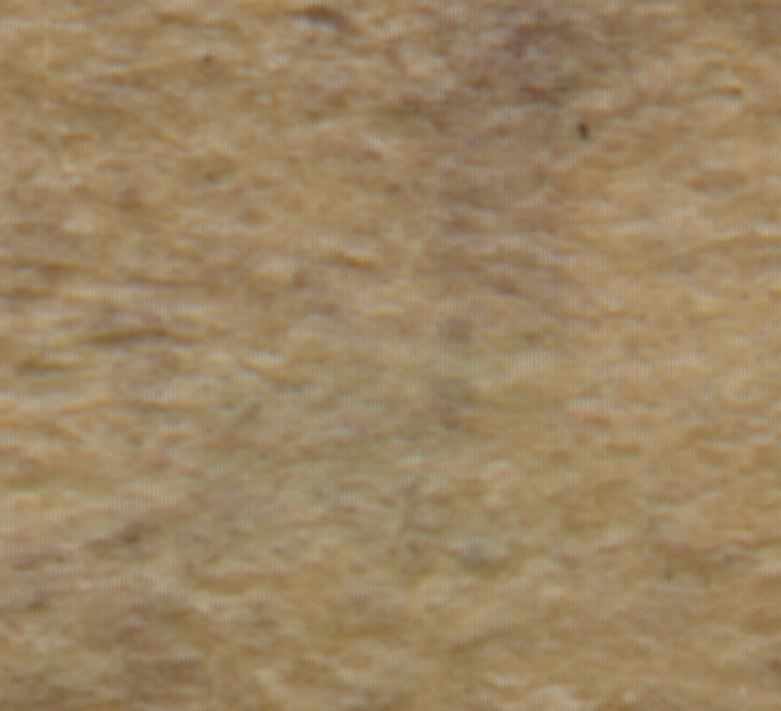Back to the stmap papers of the Eva Peron issue.
In one of his fine articles about the stamp papers of Argentina Dario A. Bardi had given as examples for the calandered [satinado] paper and the coated [tizado] paper stamps fromn this series of Evita Perón.
Para ejemplificar los satinados podemos tomar el sello 523 que es el 45c.de la serie de Eva Perón de 1952 y como tizados los valores altos, esto es los 525 a 536 de la misma serie.
I read this as that the 45c [in recess!] is on calandered paper and the 1-3p in photogravure [both without or with the name of Eva Perón] plus the 5-50p in recess are on coated paper!
All the recess-printed stamps [45c, 5-50p!] are on slightly coated paper [or even that may only be calandered] with a layer of varnish before the recess-printing took place. Mint stamps show the gloss on the white paper but not on the recessed lines. Used stamps often have no gloss or hardly any gloss left. Washed away varnish?
The case of the photogravure printed stamps is similar - slightly coated or calandered - and not always a varnish gloss it seems! Some like the 2p no-name has even on some used stamps a clearly visible gloss. Should there have been a real coating the direction of printing [ink flowing out towards the left side] must have been quite visible which is not.
As to the watermarks the 1-3p photogravure stamps have the parallel watermark with a clear AЯ and more or less vertical lines [rayado] as the direction of paper is horizontal ["m"]. The 45c has an orthogonal watermark whereas the 5-50p have the parallel watermark. In the recess-printed stamps it is hard to tell whether there are lines [rayado] as the pressure of the recess plates/cylinders of the Giori-press is too high.
As Bardi wrote the paper of the 45c is different from the paper of the 5-50p, but not because of the calandering or coating, but because of the watermark topology [parallel vs orthogonal].
The watermarked paper for the lower values [1-50c] - they are in offset-litho - is parallel with a clear AЯ and more or less horizontal lines [rayado] as the direction of paper is vertical ["M"]. This paper is very similar to the paper used for [part of] the 5c Jose San Martin definitive of 1945 and the State Airlines stamps [L.A.D.E] of 1946.
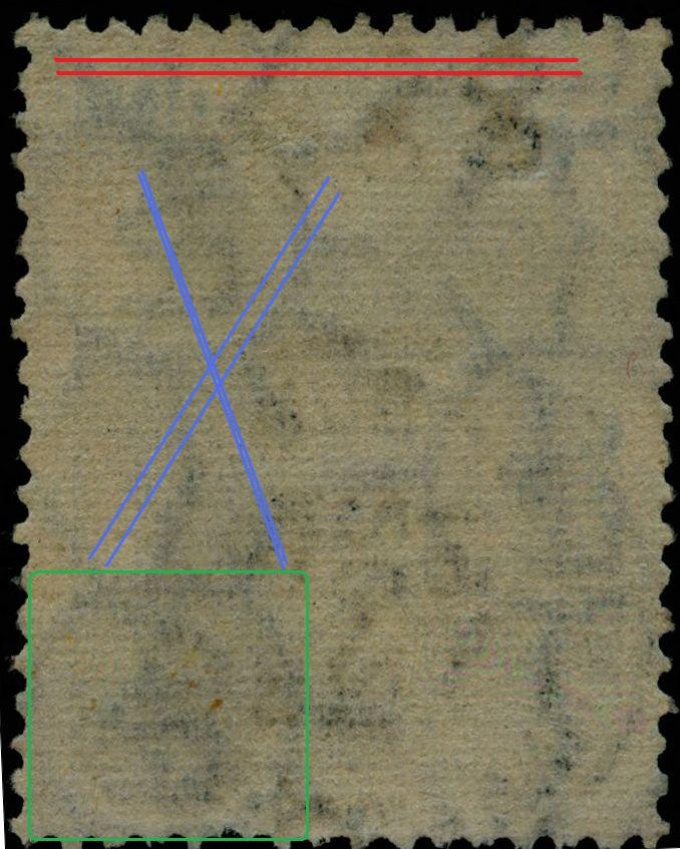
The lower values with "national paper" have yellow gum and an orthogonal watermark mostly with an asymmetrical paper wire! The watermark itself is hardly visible and the paper doesn't look that "crispy"...
